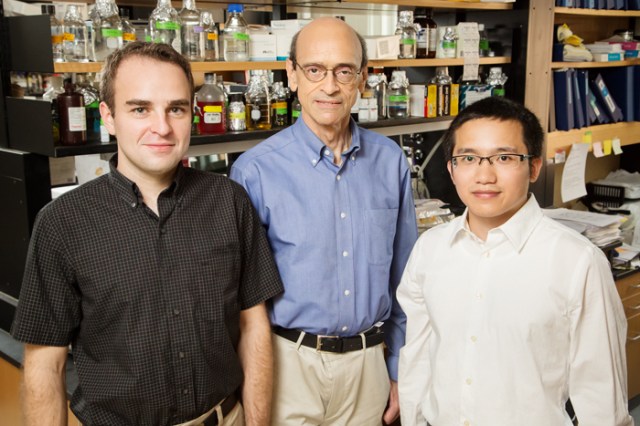BTN.com staff, October 20, 2014
It?s Breast Cancer Awareness Month, and new research from a University of Illinois medical team could redefine the role of estrogen in the development of this deadly disease.
Biochemistry professor David Shapiro and M.D.-Ph.D. student Neal Andruska have determined that estrogen aggressively initiates a pathway that protects cells from stress, allowing those cells to divide and grow. That includes cancer cells, which are free to increase thanks to the ?molecular chaperones? created by the pathway initiated by hormone.

Reducing the impact of estrogen slows the unfolded-protein response (UPR) - the technical name of the pathway that protects cells from strain. To put it even more simply: Less estrogen means lowered protection of the cells from stress and reduced cell growth.
The research was initially designed to determine the activation sequence revolving around the creation of the ?chaperones.? It was thought that if those protections could be slowed or prevented, drugs could more easily attack existing cancer cells.
They knew estrogen was part of the protection process, and reacted to stress by signaling the body to create the protection pathways. However, estrogen was believed to be a passive contributor, reacting only when stress is present.
What Shapiro?s team discovered was that estrogen signals the start of the protection process even before stress is introduced. Cancer treatment drugs are a form of stress to the cells, but thanks to estrogen, those cells are often protected even before those drugs can be applied.
?The initial goal of the research team was to identify anything about the system that serves as protection of cancer cells,? Shapiro said. ?Cancer cells die when they are under stress. If they have lots of chaperones to protect them, they have a better chance to survive.?
These chaperones are thus a frequent target for existing cancer therapies. Without protection, cancer drugs are better able to attack cancer cells.
?We were a bit surprised at the magnitude of the effect of estrogen on the creation of the pathways,? Shapiro said. ?It was a major discovery. Now this improves the drug-development aspect of cancer treatment in evaluating cancer patients.?
Andruska also discovered that the activation of protection pathways is a strong indicator of the course of a woman?s disease, Shapiro said. Women with a high level of UPR activation were more likely to have a recurrence of breast cancer compared with women with a low level of UPR activation.
The research was funded by the National Institute of Diabetes and Digestive and Kidney Diseases at the National Institutes of Health. Food science and human nutrition professor William Helferich, as well as University of Illinois graduate student Xiaobin Zheng and postdoctoral researcher Xujuan Yang contributed to the research.
Though it was a team effort, Shapiro was quick to credit Andruska with the discovery of estrogen?s increased role in cell protection.
?He did an excellent job in pioneering this work, moving this project in the new direction,? Shapiro said. ?He created an extraordinary body of work. Now we can interface with other schools and teams of researchers who can carry out new and exciting directions of research.?







